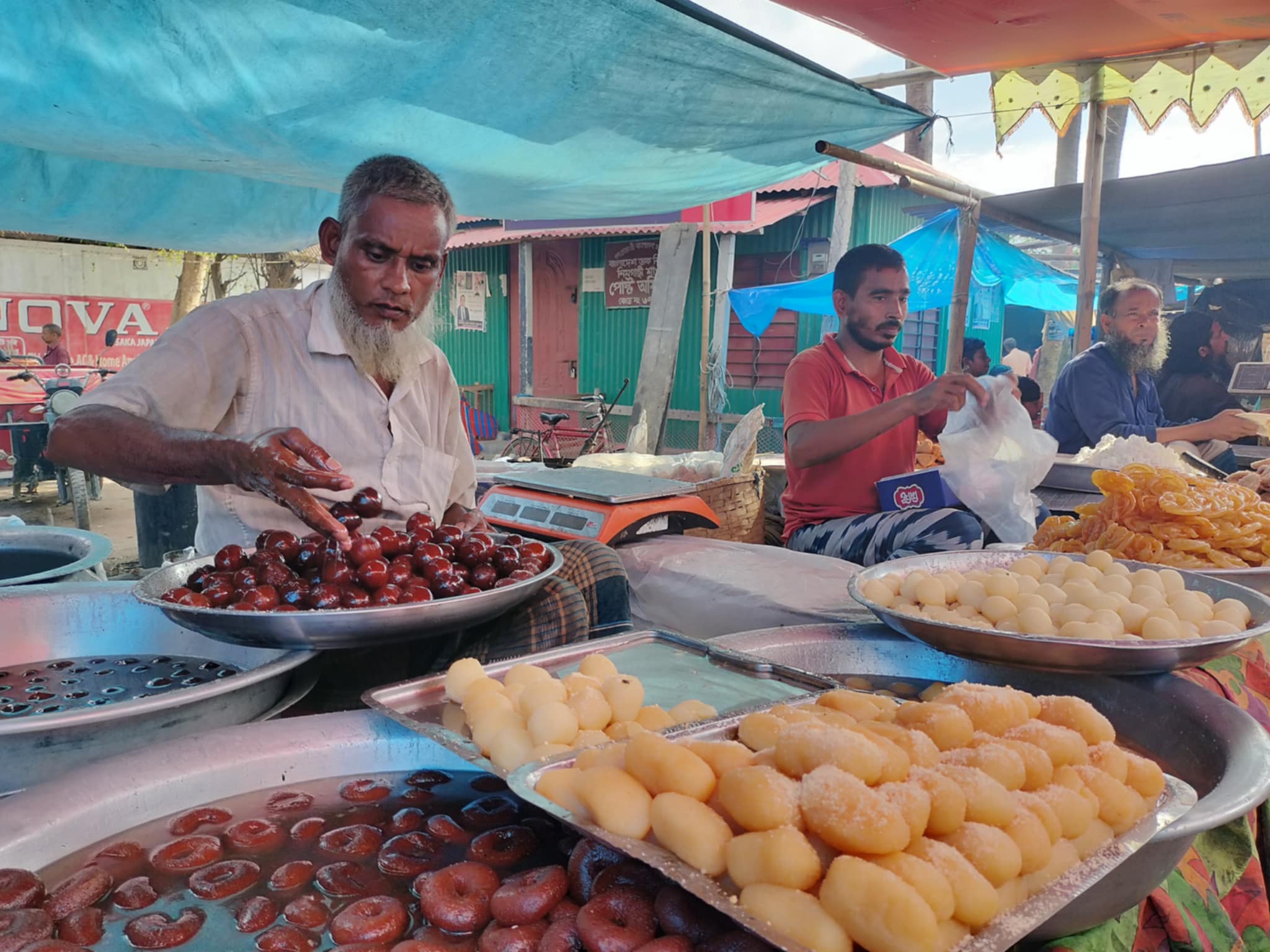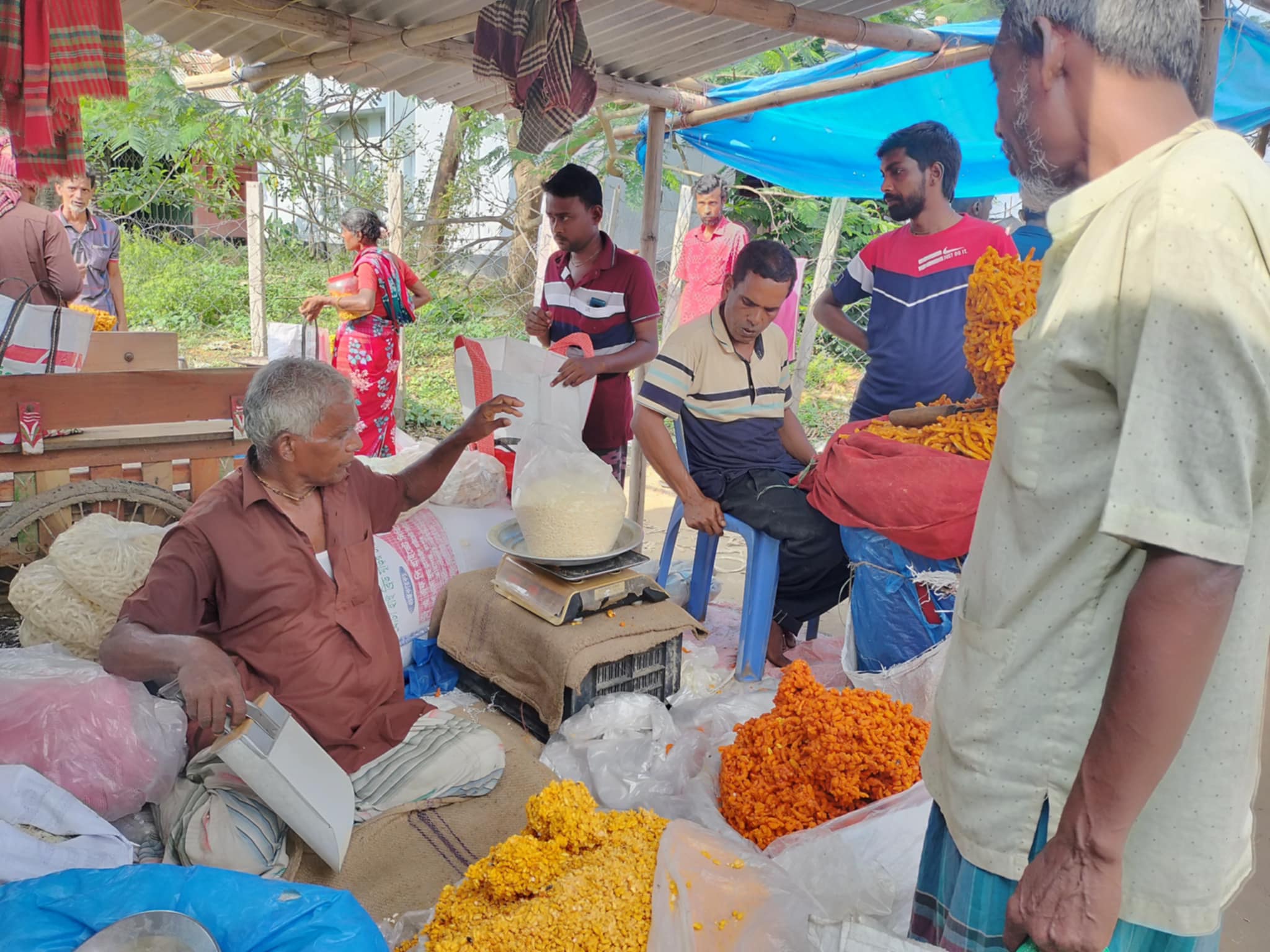News Flash
News Flash

By Harun-or-Rashid Khan Hasan
SIRAJGANJ, May 26, 2025 (BSS) - Like every year, the traditional 450-year-old Jamaibaran Mela is being held in Raiganj upazila of the district this year too.
This fair, also called 'Basher Mela' (Bamboo Fair), starts on the second Sunday of the Bengali month of Jyishtha at Nimgachhi Bazar in Sonakhara Union of the upazila. It continues until the next Monday.
On Sunday afternoon, when this correspondent visited Nimgachhi Bazar in Sonakhara Union of the upazila, which is inhabited by small ethnic groups, it was seen that the people who came to the fair were busy shopping.
According to a book titled "Raiganj: History, Society and Culture", written by K. M. Rezaul Karim, Associate Professor and Head of the Department of Sociology at Government Michael Madhusudan (MM College) College in Jashore, this fair has been held since 1556 AD.
The fair centers around a special bamboo. Since long ago, the people of various ethnic communities including Orao and Mahato, a small ethnic group here, used to worship the bamboo as a deity.
A week before the fair begins, the "Madar Bamboo Fair" is held in villages. A group of 15-20 people wrap a large bamboo in red cloth and decorate it in various colors. They go from house to house playing drums and singing songs and showing stick games to earn money.

A joyous mood prevails in the villages centering the fair. Relatives and friends come to every house in the area. Food is served. Especially sons-in-law are brought from house to house. The in-laws give various gifts and cash to the sons-in-law. They also go to the fair to buy fish and sweets and bring them to their in-laws. That is why this fair is also called Jamaibaran Fair.
Local senior journalist and poet Abdul Quddus Talukder said, "I have heard from elderly persons that this fair is held every year to commemorate the story of Gazi-Kalu-Champabati. It is known that Gazi Saha defeated Champabati's father in a war and married her.
The fair is organized every year on the occasion of that festival. For this, cloth was wrapped around a large bamboo and decorated in various ways and displayed on the day of the fair which was called Madar Bamboo.
Abdul Quddus Talukder said from the early times, bamboos were brought from various villages. Those bamboos were bigger and more decorated were rewarded by the fair committee. A few days before the fair, a group of people would carry the bamboo on their shoulders and beat drums in the surrounding villages to seek help. They would demonstrate various tricks with knives and sticks. People used to help them with rice and money, thus contributed to keeping the culture of the area alive.
Although the cutting of Madar bamboos has stopped with the passage of time, the effort to collect help by performing tricks is still continuing.
Nihar Ranjan Sarkar of Dutta Bari village of Desigram union in Tarash upazila said the area has become lively around this fair. On the second day of the fair, Monday, relatives come to each house.
Joydev Chandra Mahato of Kanchaneshwar village said that the level of joy increases significantly as the fair is held after the harvesting and threshing of paddy.
Former Assistant professor of Nimgachi College Jogendranath Sarkar said that it is said that Bengali Hindus have thirteen festivals in twelve months. Tribal Hindus celebrate even more festivals in a year. After the paddy harvest, a festive mood sweeps through the local communities. This is a big festival of the year.
Ujjal Kumar Mahato, a writer in the Kurmali language of the Mahato community, said, "Whether it is called Bamboo Fair, Madar's Fair or Jamaibaran Fair, this fair brings everyone together."
Fair visitor Hirendranath Mahato of Shyamerghona village said he never misses the fair. Upendranath Mahato, a Jhumur singer from Paschim Atgharia village, said, "This traditional fair has now become an occasion for everyone to celebrate."